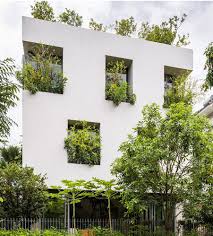“`html
Green Building Architecture: Designing for a Sustainable Future
In recent years, the concept of green building architecture has gained significant traction as the world increasingly focuses on sustainability and environmental conservation. Green building architecture emphasizes the use of eco-friendly materials, energy-efficient design, and sustainable practices to reduce the environmental impact of buildings.
One of the key principles of green building architecture is to minimize energy consumption through passive design strategies such as proper insulation, natural lighting, and ventilation. By harnessing natural resources effectively, green buildings can significantly reduce their reliance on artificial heating, cooling, and lighting systems, leading to lower energy costs and carbon emissions.
Furthermore, green building architecture prioritizes the use of renewable energy sources such as solar panels, wind turbines, and geothermal systems to further decrease reliance on fossil fuels. Integrating these technologies into building designs not only reduces environmental impact but also promotes energy independence and resilience.
Another important aspect of green building architecture is the selection of sustainable materials that are responsibly sourced, durable, and recyclable. By choosing materials with low embodied energy and environmental impact, architects can create buildings that are not only aesthetically pleasing but also environmentally friendly.
Moreover, green building architecture takes into consideration water conservation through features like rainwater harvesting systems, greywater recycling, and efficient plumbing fixtures. By reducing water consumption within buildings and implementing innovative water management strategies, green buildings contribute to overall resource conservation.
Overall, green building architecture represents a holistic approach to construction that prioritizes sustainability, efficiency, and environmental responsibility. As architects continue to embrace green design principles in their projects, we move closer to creating a built environment that harmonizes with nature and supports a more sustainable future for generations to come.
“`
Understanding Green Building Architecture: Key Questions and Answers
- What is green building architecture?
- Why is green building architecture important?
- What are the key principles of green building architecture?
- How does green building architecture contribute to sustainability?
- What are some examples of sustainable practices in green building architecture?
What is green building architecture?
Green building architecture refers to the design and construction practices that prioritize sustainability, energy efficiency, and environmental responsibility. It involves incorporating eco-friendly materials, energy-saving technologies, and sustainable strategies to reduce the environmental impact of buildings. Green building architecture aims to create structures that are not only environmentally friendly but also promote the well-being of occupants and the surrounding ecosystem. By emphasizing factors such as resource conservation, renewable energy use, and waste reduction, green building architecture plays a crucial role in mitigating climate change and fostering a more sustainable built environment for present and future generations.
Why is green building architecture important?
“`html
Green building architecture is important for several reasons. Firstly, it helps reduce the environmental impact of buildings by promoting sustainable practices that conserve resources and minimize carbon emissions. By incorporating energy-efficient design, renewable energy sources, and eco-friendly materials, green buildings contribute to mitigating climate change and preserving natural ecosystems.
“`
What are the key principles of green building architecture?
“`html
When exploring the key principles of green building architecture, several fundamental concepts emerge that guide sustainable design practices. These principles typically include energy efficiency, resource conservation, sustainable materials, water management, and indoor environmental quality. By focusing on reducing energy consumption, utilizing renewable resources, selecting eco-friendly materials, implementing water-saving strategies, and enhancing occupant comfort and health, green building architecture aims to create structures that minimize environmental impact while promoting a healthier and more sustainable built environment.
“`
How does green building architecture contribute to sustainability?
“`html
Green building architecture plays a crucial role in promoting sustainability by incorporating eco-friendly practices and designs that minimize environmental impact. By prioritizing energy efficiency, green buildings reduce carbon emissions and lower energy consumption, contributing to a healthier planet. Additionally, the use of sustainable materials and construction techniques helps conserve natural resources and reduce waste generation. Through innovative strategies such as passive design, renewable energy integration, and water conservation measures, green building architecture not only minimizes environmental harm but also creates healthier indoor environments for occupants. Overall, the holistic approach of green building architecture fosters a more sustainable built environment that supports long-term ecological balance and human well-being.
“`
What are some examples of sustainable practices in green building architecture?
“`html
When it comes to sustainable practices in green building architecture, there are several key examples that demonstrate a commitment to environmental responsibility. One common practice is the incorporation of passive design strategies, such as orientation for optimal sunlight exposure and natural ventilation, to reduce the need for artificial heating and cooling. Additionally, the use of energy-efficient systems like LED lighting, high-performance insulation, and smart thermostats helps minimize energy consumption and lower carbon emissions. Sustainable materials play a crucial role in green building architecture, with choices like recycled content, locally sourced materials, and low-VOC paints promoting eco-friendliness. Water conservation measures such as rainwater harvesting systems, greywater recycling, and drought-resistant landscaping further enhance the sustainability of green buildings. By integrating these practices into architectural designs, professionals can create buildings that not only minimize environmental impact but also prioritize the well-being of occupants and the planet.
“`

